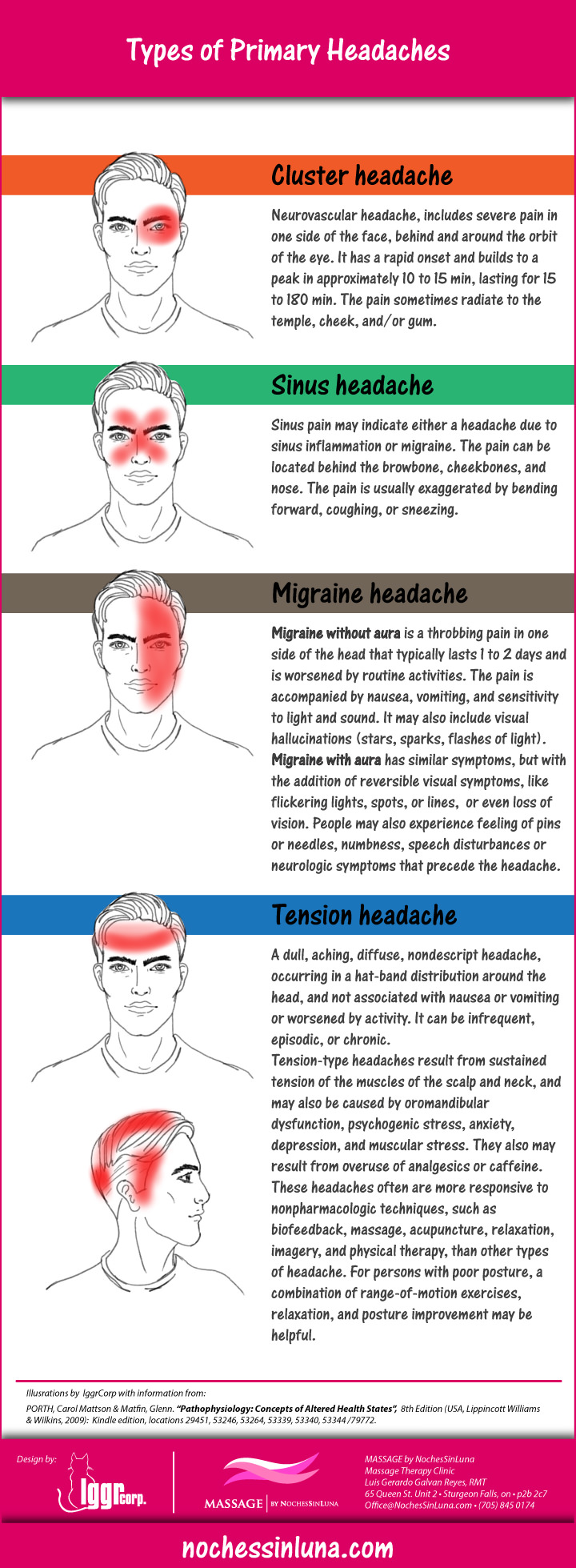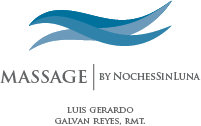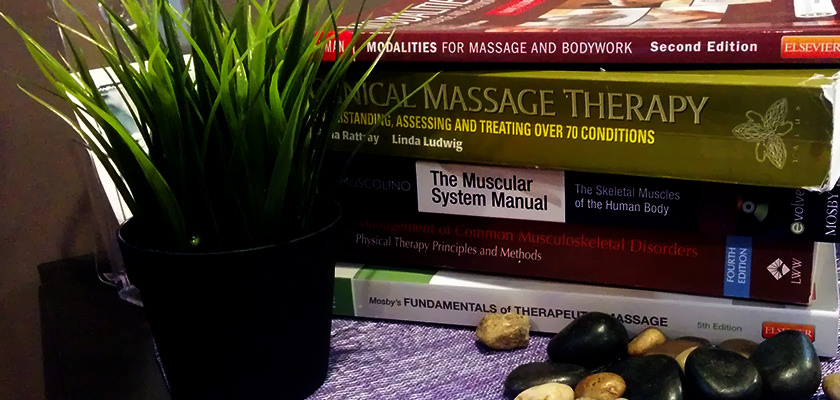Massage Therapy as Healthcare Alternative for the Treatment of Tension Headaches.
By Luis Gerardo Galvan Reyes, RMT.
February 6th, 2017.
Headaches are one of the most common physical ailments. Although they may be indicative of more serious conditions (secondary headaches), most headaches are self-contained (primary headaches) and of temporary nature.1
By definition, a headache is a pain that can be caused by different factors: muscular tension, nerve irritation, vascular spasm and dilation, chemical imbalances, etc.2 The “pain can range from mild to debilitating; it can involve the whole head or be isolated to a particular area; it can be described as dull, aching, or sharp, electrical and agonizing.”(WERNER: 2013)
Statistics say that over 90% of adults have suffered a headache at least once, 65% of women and 57% of men report at least one headache a month, 25% of adults suffer of recurring severe headaches and, 4% report having daily episodes.3

The diagnosis and classification of headaches is often difficult, it requires a comprehensive history and physical examination. In 2004, the International Headache Society published a classification system that divides them into primary headaches, secondary headaches, and cranial neuralgias and facial pain. Primary headaches include tension headaches and migraines.4
Tension headaches & Massage Therapy.
Tension headaches may last anywhere from 30 minutes to weeks, they can be episodic (with clear start and endpoints), or may not have easily identifiable times of onset or end. If the pain lasts for more than 15 days it's considered chronic. The pain is usually bilateral, diffuse and constant, with a dull character or vise-like. Tension headaches are often associated with muscular tenderness and stiffness, increased tone in the affected muscles, and loss of appetite. This type of headache can be aggravated (worsened) by stress, fatigue, cold, low blood sugar, poor posture, and decreased head/neck movement.5
There are several factors that can make a person susceptible to suffer tension headaches: trigger points in muscles of the neck and thorax, trauma, muscle overload, infections, fatigue, chilling of the muscles, emotional stress, sleep disturbances, postural imbalances, fascial restrictions, and temporomandibular joint (jaw joint) dysfunction.6
“Tension-type headaches indicate massage, which can help to address the musculoskeletal and stress-related holding patterns that contribute to inefficient movement and pain.”(WERNER: 2013)
During a tension headache episode the person wishes to rest, and can even be considered a mild disability. In most cases, the person will try to function normally throughout their day, but their productivity and ability to focus may be negatively affected.7
Massage Therapy can be a great alternative for the treatment of tension headaches. A palliative care approach with a base of relaxation massage, trigger points release, and diaphragmatic breathing, is the "go to" treatment. The use of hot hydrotherapy is often recommended in order to help the process of muscular relaxation.8
For this situations, the aims of a Massage Therapy Treatment are to reduce sympathetic nervous system firing, reduce pain, reduce muscular tone, treat trigger points, procure joint health, increase range of motion, and improve tissue health.9
Self-care is also very important in order to boost and maintain massage therapy results. Depending on the affected muscles and particular findings, your massage therapist may prescribe a series of stretches, strengthening exercises, and hydrotherapy applications.
I hope you learned a little bit after reading this piece, and that my writing was clear enough to make it easy to read. If you ended up with more questions than answers, please feel free to ask away, email me to office@nochessinluna.com putting "ARTICLE 2017-0206: Question" as subject, or "ARTICLE 2017-0206: Feedback" if you just want to make a comment or point out errors in the presented information. If you want me to write about a topic in particular please request it with the subject "ARTICLE Topic: Suggestion".
Thank you for reading, see you next week!
(^-^)b
(1) WERNER, Ruth. “A MASSAGE THERAPIST’S GUIDE TO PATHOLOGY”, 5th Edition (USA, Lippincott Williams & Wilkins, 2013): Kindle edition, location 7743/30390.
(2) WERNER, Ruth. Ibid: Location 7754/30390.
(3) PORTH, Carol Mattson & Matfin, Glenn. “Pathophysiology: Concepts of Altered Health States”, 8th Edition (USA, Lippincott Williams & Wilkins, 2009): Kindle edition, location 53217/79772.
(4) PORTH, Carol Mattson. Ibid: Location 53221-53240/79772.
(5) RATTRAY, Fiona and Ludwig, Linda. "CLINICAL MASSAGE THERAPY", (Canada, TALUS, 2005): 491.
(6) RATTRAY, Fiona. Ibid: 491.
(7) RATTRAY, Fiona. Ibid: 491.
(8) RATTRAY, Fiona. Ibid: 494.
(9) RATTRAY, Fiona. Ibid: 494.




